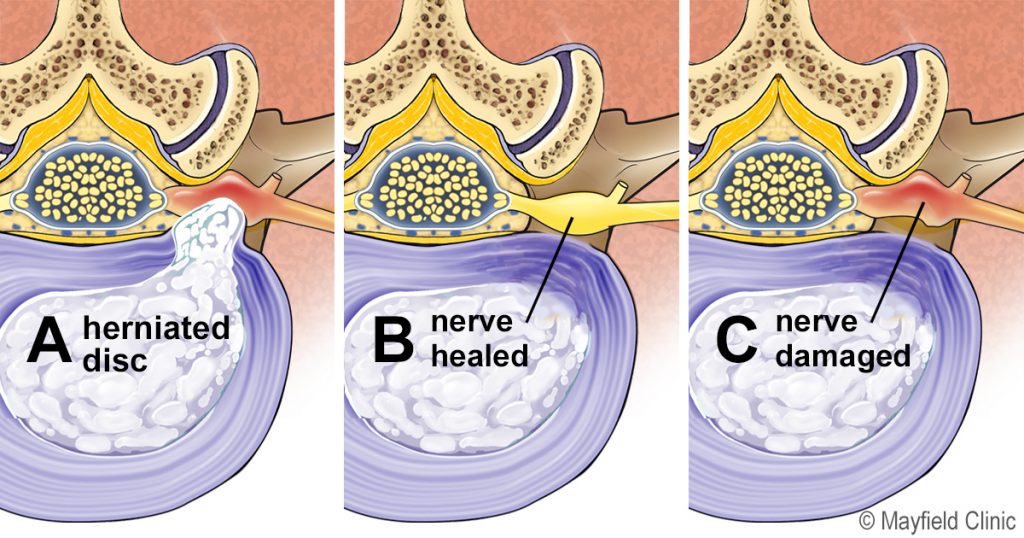
By Luke Iding, PT, DPT
Many patients undergo spine surgery because a nerve has become pinched or injured. Nerve pain is different from muscle pain and can be debilitating. Below are some nerve basics:
- Nerves carry pain signals from a specific body part to the spinal cord and up to the brain, where pain is interpreted. Pain is both a sensory and emotional experience. It is felt differently by each person.
- Compressed or injured nerves can become more sensitive, even after the damage has been repaired. These nerves now require less or even no input to create a pain signal. An example of this in the body is when pain is experienced with just light touch or movement. Imagine a pleasant, warm shower – a normally calm and relaxing occurrence becomes uncomfortable when you have a bad sunburn. A sensitized nerve is similar to a sunburn where normal movement and touch can become quite painful.
- Spinal nerves need three things to perform their best:
- Space: Surgery can relieve compression around the nerve, giving the space it needs to function properly.
- Movement: Nerves are meant to glide freely in your body as they run from the spinal cord out into your arms and legs. Light stretches and range of motion are important to help restore this property after surgery. Gradually increase exercise and do not push through severe pain. Think sore, but safe.
- Blood flow: Nerves use about 25% of all blood and oxygen in the body. Cardio exercise is a crucial part of recovery to help pump blood and oxygen around your nerves.
- While you can do things to help create movement and blood flow around the nerves after surgery, arguably the most important factor is time. Nerve recovery can take a year or more after spinal surgery to return to baseline levels of nerve sensitivity. The nervous system requires thousands of repetitions and hours to make these changes. It’s similar to the process of learning to play an instrument or developing a new skill.
- Ice and gentle massage can assist to decrease painful areas. Use around the surgical site or painful points in the arms/legs. This can help settle nerve impulses and decrease overall pain. Make sure to avoid massaging directly around the incision.
- Fear of movement, anxiety, ongoing pain, and other stressors contribute to nerve sensitivity levels remaining high for extended periods after surgery. Try to have a plan in place, both before and after surgery, to manage common stressors in your life. Consult with appropriate healthcare providers if you need assistance or further information.
- You can manage pain and nerve sensitivity with meditation, proper sleep, cardio exercise, gentle stretching and strengthening, and monitoring your pain triggers. There are helpful smartphone apps for guided meditation and further pain education.
Understanding that injured nerves may take longer to recover after surgery is important to tracking your progress and expectations. Some patients have immediate relief while others have gradual improvement. Talk with your physical therapist about persistent or worsening pain.
Luke Iding, PT, DPT, is a physical therapist with Mayfield Brain & Spine.
References:
Louw, A. (2012) Your Nerves Are Having Back Surgery (1st ed.). Orthopedic Physical Therapy Products.
Louw, A., et al. (2018) Pain Neuroscience Education (2nd ed.). Orthopedic Physical Therapy Products.